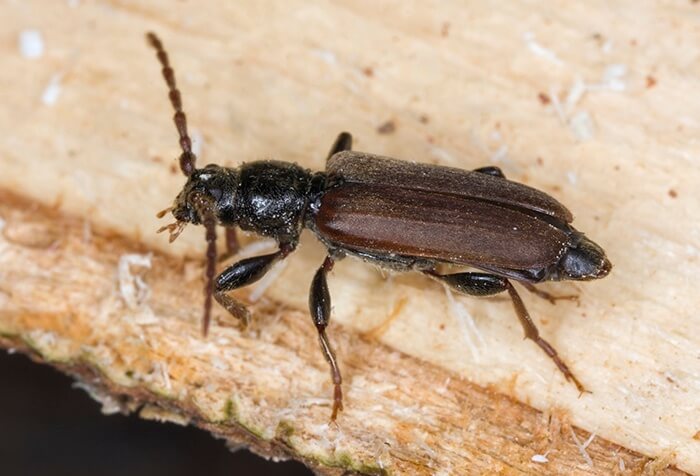Pests of the Southwest
Rabbits may be cute and cuddly, but they can also be destructive pests- causing destruction to both gardens and trees. These furry creatures are just one of the multiple common pests that can be found in the Southwest. Here are some of the most common insect and animal pests that affect the Southwest region.*
RABBITS
There are multiple species of rabbits, and all are difficult to control. They eat freely in vegetable, herb and flower gardens, and may gnaw on tree bark, causing both cosmetic and inner trunk damage.
- Designation: nuisance and harmful
- Remedy: Use appropriate fencing, particularly around vegetable gardens, to keep rabbits out. Protect trees with trunk guards. Natural repellants, such as hot-pepper spray, garlic spray or fish emulsion may discourage rabbits, but only for a short time.
WOOD-BORING BEETLES
There are over 350,000 types of beetles.1 Some beetles, such as ladybugs, are harmless, but others, including wood-boring beetles, pose a risk to both live and decaying trees. These wood-boring beetles, which include the powderpost, long-horn, deathwatch and false powderpost varieties, also invade homes, boring into wood framing and even furniture, depositing eggs and leaving telltale tiny, round exit holes.
- Designation: nuisance and harmful
- Remedy: Inspect trees and shrubs regularly for signs of damage, and remove any diseased or unhealthy trees or tree limbs. Treat as directed with an appropriate product, such as Amdro Quick Kill Insect Killer for Lawn & Landscape Ready To Spray, which is easily applied using a garden hose.

Trees are at risk from wood-boring beetles, including long-horn types.
CUTWORMS
Troublesome cutworms are about an inch long and gray. They wreak havoc at night, feeding on younger plants at the stem or below the surface of the soil, eventually causing death.
- Designation: nuisance and harmful
- Remedy: Pick off cutworms at night by flashlight. Treat non-edible plants with an effective product such as Amdro Quick Kill Ant & Spider Killer, which lasts up to three months. To protect new plants, place collars around them.

Cutworms eat plants at or near the base and work at night, making them difficult to find and remove.
*Remedy time and difficulty will vary by the size of the garden or yard; most involve taking simple steps. Follow all product label recommendations to ensure the greatest chance of solving the problem.
Resources:
1. "Case Study: Why So Many Beetles?" The University of California, Berkeley.
Amdro; Amdro Quick Kill; and Kills Ants are trademarks of Central Garden & Pet Company




